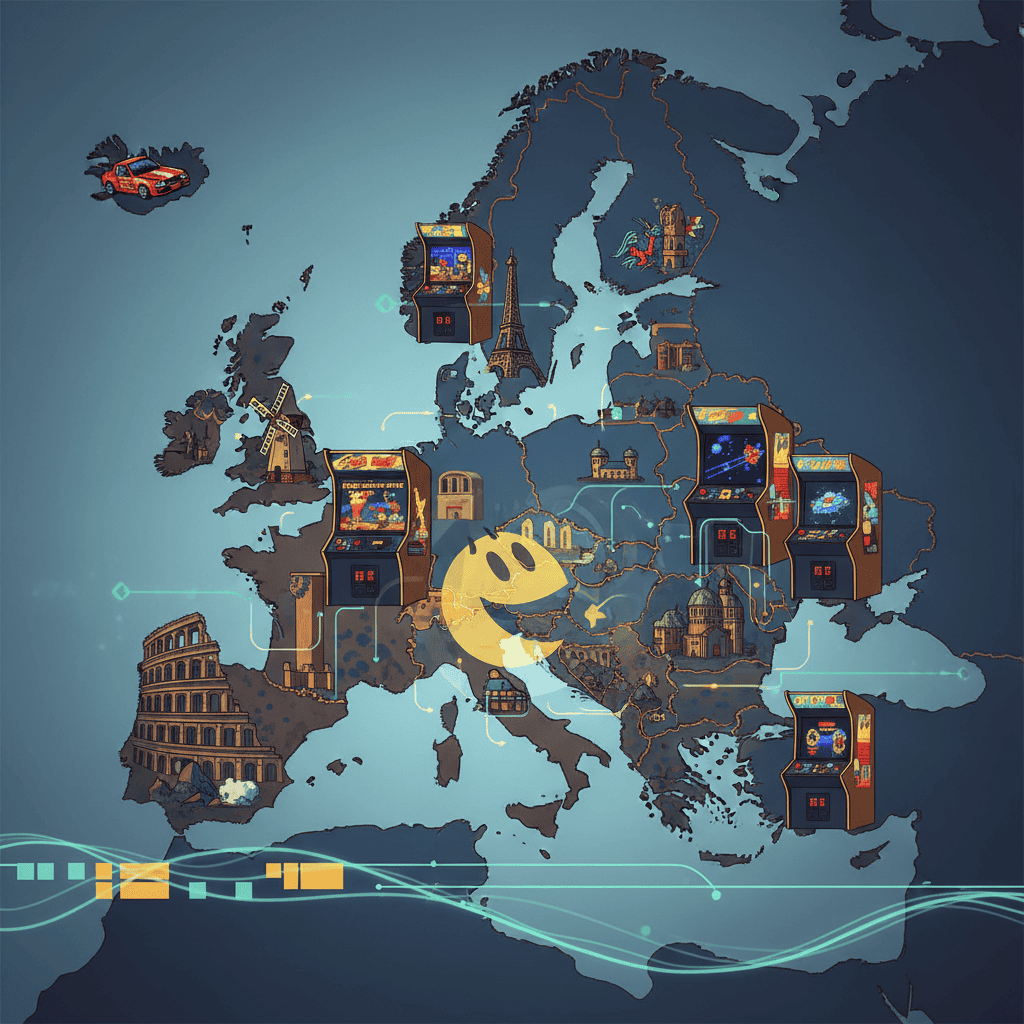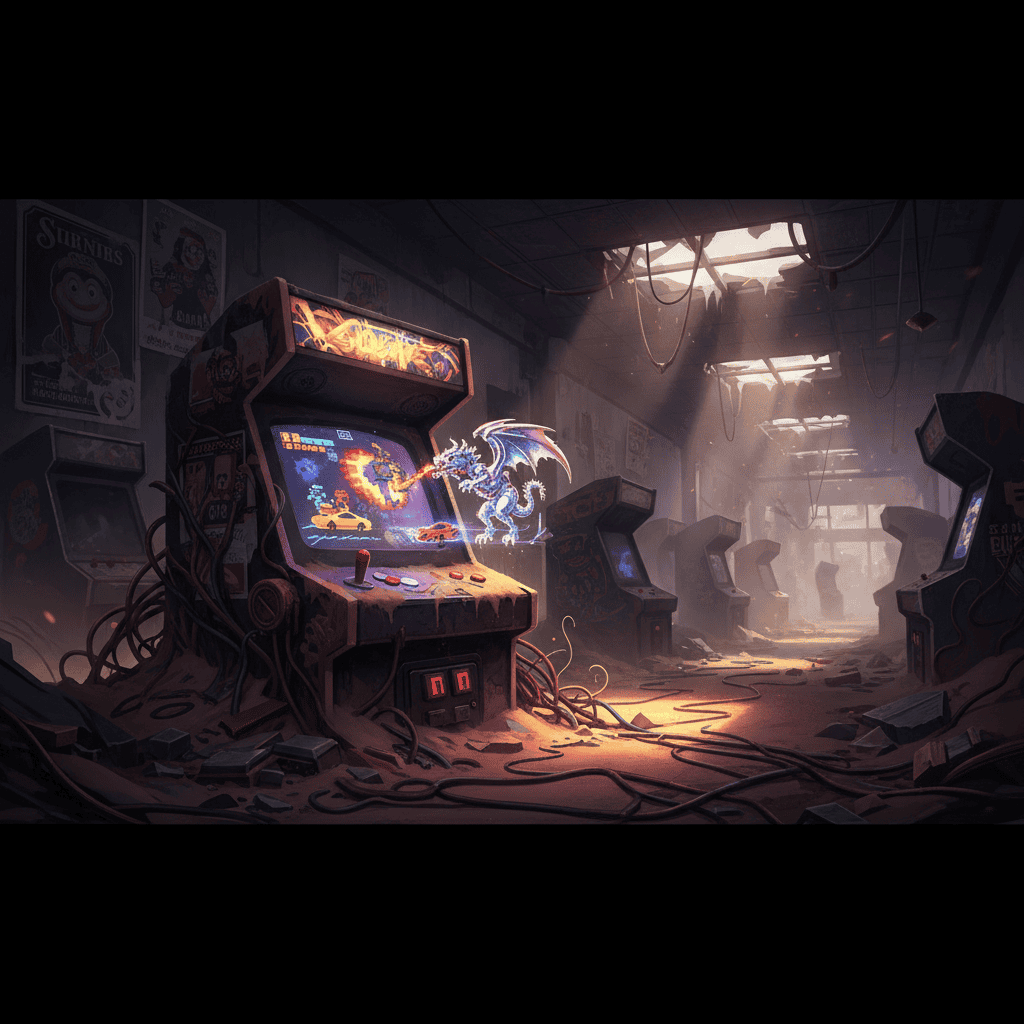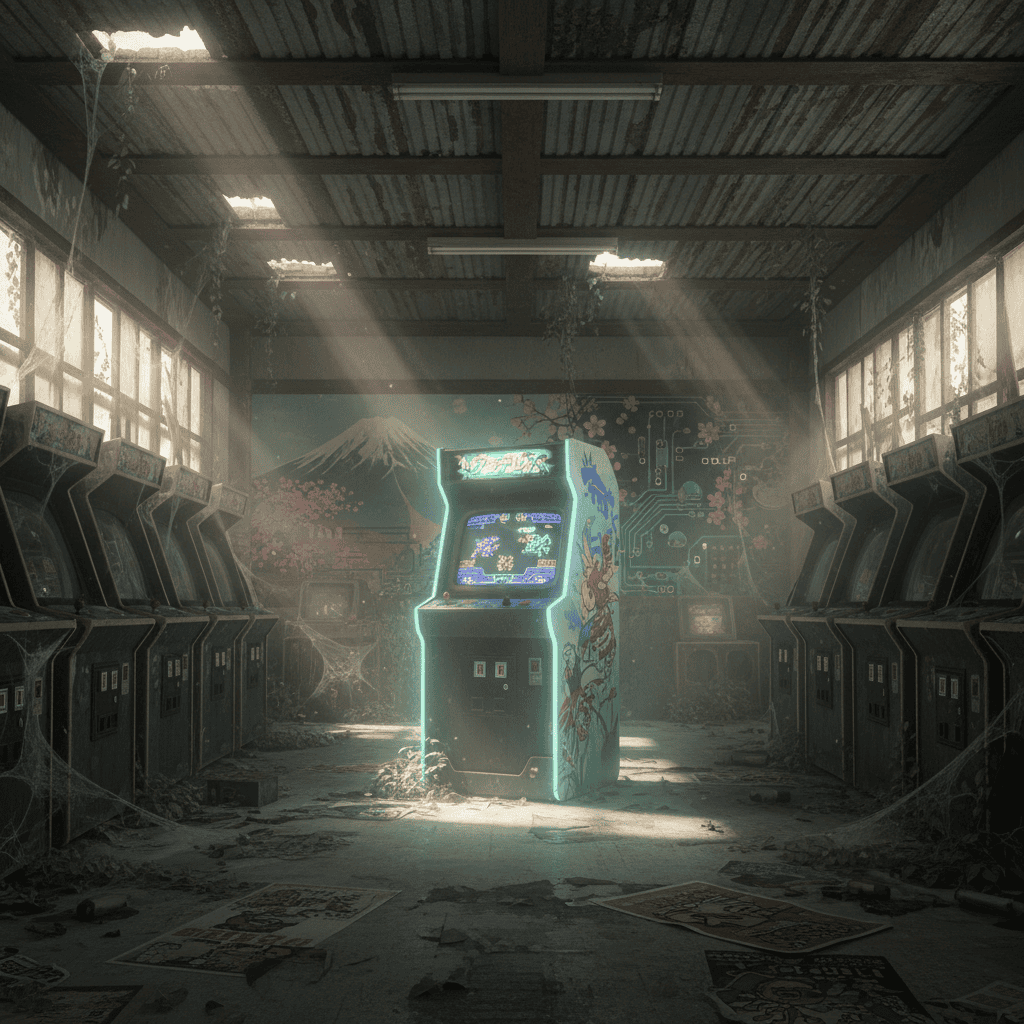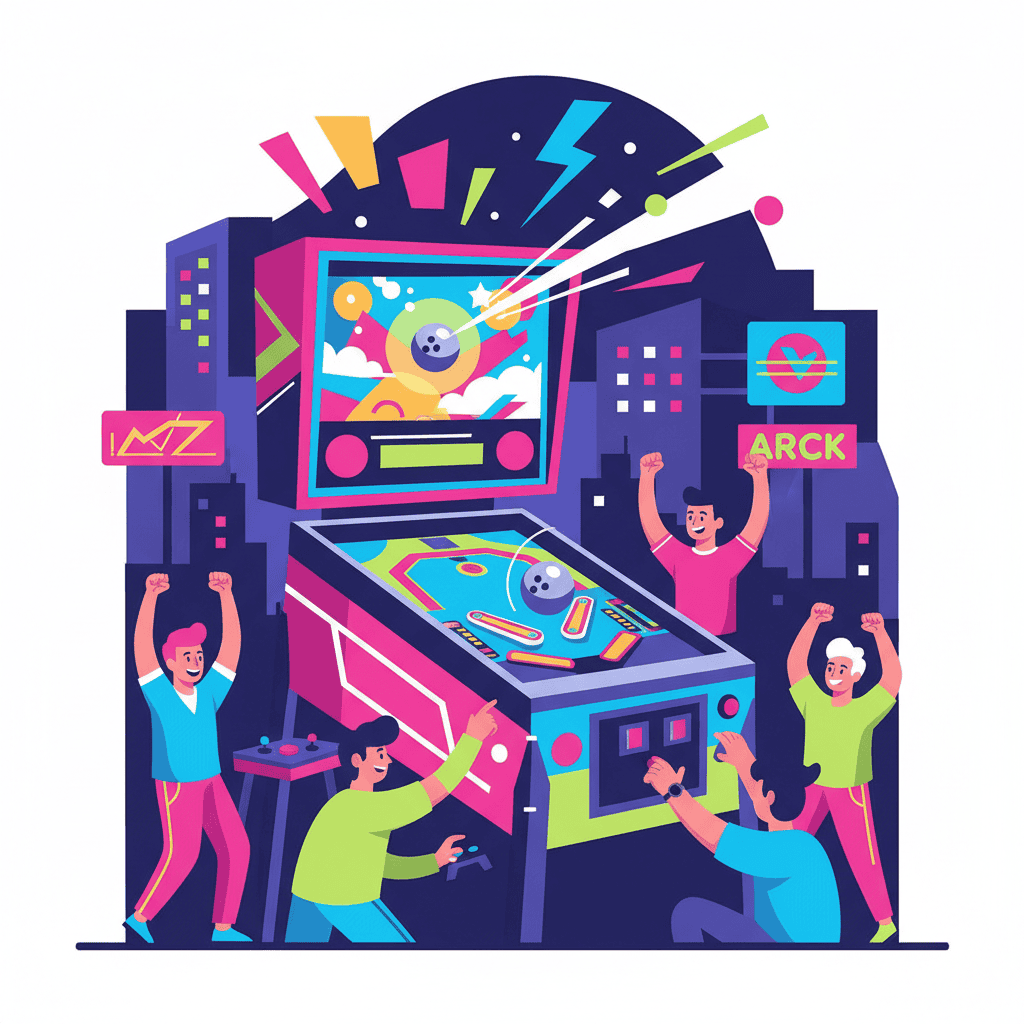Europe’s vibrant arcade game history, often overshadowed by its American counterpart, boasts a rich tapestry of unique titles and cultural nuances. This deep dive explores the distinct characteristics of the European arcade scene, examining its evolution, influential titles, and enduring legacy. The European arcade games landscape, far from a mere reflection of American trends, offers a compelling study in regional adaptation and innovation.
A Continent of Cabinets: Tracing Arcade History in Europe
The rise of arcade gaming in Europe mirrored, yet diverged from, the American experience. While early pioneers like Space Invaders and Pac-Man enjoyed universal appeal, European developers quickly established their own identities. The early 1980s saw a proliferation of arcades, particularly in bustling city centers. These weren’t simply import hubs for American games; they were fertile grounds for local creativity. Factors like differing regulatory environments and regional tastes influenced the types of games that thrived. For example, the popularity of certain genres like driving games in certain parts of Europe is likely linked to the strong car culture existing there. This early development of a localized arcade scene set the stage for future innovation.


Beyond the Imports: Unique European Arcade Game Titles
While American imports dominated early arcade halls, European developers began creating titles reflecting local tastes and sensibilities. This resulted in unique gameplay mechanics, art styles, and themes. Finding comprehensive records of every obscure title is a monumental task – many vanished without a trace. However, certain titles stand out as exemplary of this distinctive European flair. Unfortunately, a central, easily accessible database documenting all obscure European arcade games doesn’t exist; research requires significant archival work and relies heavily on individual collector accounts and enthusiast communities.
Hidden Gems and Regional Champions
Identifying the absolute “best” is subjective and depends on individual preferences. However, some titles frequently mentioned within enthusiast circles include:
- [Game Title 1]: (Brief description emphasizing unique aspects)
- [Game Title 2]: (Brief description emphasizing unique aspects)
- [Game Title 3]: (Brief description emphasizing unique aspects)
| Game Title | Developer (if known) | Year (approx.) | Notable Feature |
|---|---|---|---|
| [Game Title Example 1] | [Developer Name or Unknown] | [Year] | [Unique gameplay mechanic or art style] |
| [Game Title Example 2] | [Developer Name or Unknown] | [Year] | [Unique gameplay mechanic or art style] |
Further research into regional variations and lesser-known titles within specific European countries (e.g., Italy, UK, Germany, France, Spain) is needed to fully appreciate the diversity of the European arcade scene.
The Evolution of European Arcade Culture
The European arcade scene’s evolution wasn’t a linear progression. The late 1980s and early 1990s saw a period of intense competition, with both established companies and smaller developers vying for market share. The rise of home consoles presented a challenge, gradually impacting arcade attendance, particularly with the emergence of more sophisticated home gaming systems that could replicate arcade experiences. However, the enduring appeal of the shared, social experience of arcades ensured their survival, albeit often in a modified form. Many arcades adapted by incorporating newer technologies and a wider range of entertainment options, showcasing the resilience of this cherished cultural institution. This transition into more diverse entertainment centers is a significant aspect of the ongoing evolution. The “best European arcades” today are often far more than just gaming halls.
The Future of European Arcades: A Look Ahead
The future of European arcade games is likely to be shaped by several key factors. Firstly, we can expect a continued focus on the social aspect, with arcades evolving into community hubs that integrate gaming with other entertainment options. Secondly, the integration of modern technologies like VR and AR will play a pivotal role. Imagine a futuristic racing game where players don VR headsets, experiencing the thrill of a Grand Prix with realistic haptic feedback, simulating the G-forces and subtle vibrations of the racecar. This blend of traditional arcade gameplay with cutting-edge technologies is poised to redefine the gaming experience. Furthermore, the resurgence of retro gaming could lead to a renewed interest in classic European arcade titles, potentially spurring new interpretations or remakes of these hidden gems. This combination of nostalgia and innovation could redefine European arcade games.
People Also Ask
What are some unique arcade games from Europe?
Many lesser-known European arcade titles exist, often developed for specific regional markets. Research into specific countries will uncover many interesting examples, though comprehensive documentation remains a challenge.
Where are the best retro arcades in Europe?
Several cities across Europe boast thriving retro arcades, often located in urban areas with a strong gaming culture. Online searches for “retro arcades [city name]” are a good starting point.
What’s the history of arcade games in Europe?
Europe’s arcade history mirrors the global trend, starting with early imports like Space Invaders and Pac-Man. However, local developers soon created unique titles reflecting regional tastes and cultural influences.
Are there any rare arcade games only found in Europe?
Yes, several obscure European arcade games are rarely found outside their region of origin, and often only within the collections of dedicated enthusiasts.
How did European arcade culture differ from other regions?
While the core experience was similar, local regulations, cultural preferences, and developer communities led to unique titles and gameplay styles in various European nations.
What makes European arcade games unique?
The combination of imported games adapted to local contexts and uniquely European titles creates a fascinating and diverse gaming landscape. It often reflects regional cultural preferences in its themes and designs.
What is the future of the European arcade scene?
The future likely involves a blend of classic and cutting-edge gaming, with a strong emphasis on the social experience, integrating VR/AR technology and attracting both nostalgic players and newcomers.
What unique gameplay mechanics can we expect to see in the future?
A fusion of traditional inputs and cutting-edge technologies like haptic feedback and motion capture is likely to redefine game controls, adding new levels of immersion and physicality.
Unearthing Europe’s Arcade Legacy: A Call to Action
The journey of uncovering Europe’s hidden arcade gems is far from over. Enthusiasts, historians, and developers alike have a crucial role to play in preserving and promoting this unique facet of gaming history. Actively supporting retro arcades, participating in online communities dedicated to European arcade gaming, and continuing to research and document these often-overlooked titles are vital steps in ensuring that this fascinating piece of gaming history is not only remembered but celebrated.
Key Takeaway: The European arcade scene, while often overshadowed, offers a rich and distinct gaming history that deserves greater recognition. Its unique titles and cultural nuances represent a vital chapter in the broader story of arcade games.




